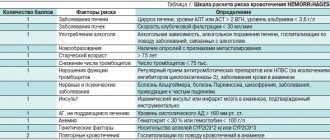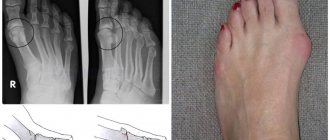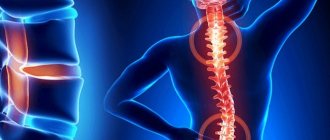Rheumatism (acute rheumatic fever) - symptoms and treatment
The main, and in most cases, the only manifestation of rheumatism is heart damage caused by inflammation - rheumatic carditis (carditis). With rheumatic carditis, simultaneous damage to the myocardium and endocardium occurs. This is the main syndrome that determines the severity and outcome of the disease.
In the case of carditis, adult patients experience discomfort in the heart area, interruptions in heart rhythm, and rapid heartbeat. There may be mild shortness of breath on exertion [4][5][7]. In children, this pathology is more severe: the disease begins with palpitations, shortness of breath at rest and during exercise, and constant pain in the heart area [7]. However, according to the observations of most pediatricians, children rarely present subjective complaints. Only 4-5% of pediatric patients report discomfort in the heart area at the onset of the disease. But about 12% of patients complain of tiredness and tiredness, especially after school [2][10].
With ARF, it is possible to develop rheumatic arthritis , which affects the musculoskeletal system. This is the second most common clinical manifestation of ARF. The prevalence of rheumatic arthritis varies according to various sources from 60 to 100% [3]. Patients complain of pain in large joints, inability to move, and enlargement of joints [4]. Polyarthritis can occur alone or in combination with another syndrome, most often with carditis. A feature of the disease is rapid and complete reverse development with timely administration of antirheumatic therapy.
Rheumatic lesions of the nervous system occur mainly in children. It is worth noting such a disease as “minor chorea”, or rheumatic chorea (Sydenham’s chorea, St. Vitus’s dance). It is manifested by emotional instability and violent, erratic, involuntary movements (hyperkinesis) of the upper torso, upper limbs and facial muscles [1][2].
Rheumatic chorea occurs in 12-17% of children; girls aged 6 to 15 years are more often affected [11]. The onset is gradual: patients experience tearfulness, irritability, twitching of the muscles of the trunk, limbs, and face. They complain of unsteady gait and impaired handwriting. The duration of chorea is from 3 to 6 months. It usually ends with recovery, but in some patients an asthenic state (increased fatigue, mood instability, sleep disturbance), decreased muscle tone, and slurred speech persist for a long time [1][2].
Ring-shaped erythema is a rare but specific clinical manifestation of ARF. It appears during the period of greatest activity of the process in approximately 7-17% of children. Ring-shaped erythema is a non-pruritic, pale pink rash. It does not rise above the skin level and appears on the legs, stomach, neck, and inner surface of the arms. The elements of the rash look like a thin rim that disappears when pressed. The diameter of the elements ranges from a few millimeters to the width of a child’s palm.
Subcutaneous rheumatic nodules are also a rare sign of ARF. These are round, dense, painless formations, varying in size from 2 mm to 1-2 cm. They are formed in places of bony protrusions (along the spinous processes of the vertebrae, the edges of the shoulder blades) or along the tendons (usually in the ankle joints). Sometimes they appear as clusters consisting of several nodules. Often combined with severe carditis.
Additional clinical manifestations of ARF include abdominal syndrome (acute abdominal pain) and polyserositis - inflammation of the serous membranes of several body cavities (pleura, pericardium, peritoneum, etc.). These syndromes develop in children against the background of high inflammatory activity. Abdominal syndrome, caused by peritonitis (inflammation of the peritoneum), is manifested by acute diffuse pain in the abdomen, sometimes accompanied by nausea and vomiting, bloating, stool and gas retention.
pleurisy (inflammation of the serous membrane covering the surface of the lungs) may develop Pleurisy can be dry or exudative. Dry pleurisy is an inflammation of the pleural layers with the formation of fibrin on them. Exudative - inflammation accompanied by the accumulation of exudate of various types in the pleural cavity. With ARF, dry pleurisy is more often observed. Currently, this manifestation of ARF is rarely observed. It may be clinically asymptomatic or accompanied by pain during breathing, dry cough, and sometimes a pleural friction noise is heard [5][6][7].
Rheumatic diseases
Rheumatic diseases
include a wide range of diseases that primarily affect joints and periarticular tissues. A special group among them consists of systemic diseases - collagenosis and vasculitis, characterized by autoimmune genesis, local or diffuse damage to connective tissue. Rheumatic diseases are studied by a specialized branch of internal medicine - rheumatology. The course of rheumatic diseases is often accompanied by multiple organ damage with the development of cardiac, renal, pulmonary, and cerebral syndromes, the treatment of which involves not only rheumatologists, but also specialized specialists - cardiologists, nephrologists, pulmonologists, neurologists. Rheumatic diseases have a progressive course, disrupt the patient’s functional activity and can lead to disability.
Rheumatic diseases such as gout and arthritis have been known since the time of the ancient Greek healer Hippocrates. In the II century. n. e. The Roman philosopher and surgeon Galen coined the term “rheumatism,” which denoted a variety of diseases of the musculoskeletal system. And only in the XVIII - XIX centuries. Descriptions of individual rheumatic diseases began to appear. Currently, according to the American Society of Rheumatology, there are over 200 types of rheumatic pathology.
Depending on the predominant lesion, the whole variety of rheumatic diseases can be divided into three large groups: joint diseases, systemic vasculitis and diffuse connective tissue diseases. Joint diseases are represented mainly by arthritis (rheumatoid, psoriatic, gouty, reactive, infectious, etc.), as well as osteoarthritis, ankylosing spondylitis, rheumatic diseases of the periarticular soft tissues. The group of systemic vasculitis includes hemorrhagic vasculitis, periarteritis nodosa, Wegener's granulomatosis, Horton's disease, Goodpasture's syndrome, Takayasu's disease, thromboangiitis obliterans. Diffuse connective tissue diseases, or systemic diseases, are represented by systemic lupus erythematosus, scleroderma, dermatomyositis, Sjogren's disease, Sharp's syndrome, etc. Separately in the classification of rheumatic diseases is rheumatism, in which simultaneous rheumatic damage to the joints, connective tissue and blood vessels occurs.
Currently, the etiology of rheumatic diseases is considered from the perspective of a multifactorial concept, according to which their development is explained by the interaction of genetic, environmental and endocrine factors. In this case, the genetic factor acts as a predisposing factor, and environmental and endocrine factors act as producing, triggering factors. The most common provoking factors of rheumatic diseases are infections caused by Epstein-Barr viruses, cytomegaly, herpes simplex, picornaviruses, etc.; intoxication, stress, insolation, hypothermia, injury, vaccination; pregnancy, abortion. The unifying links in the pathogenesis of all rheumatic diseases are disruption of immune homeostasis and the development of a severe immunoinflammatory process in connective tissue, microvasculature and joints.
Rheumatic diseases occur among patients of various age groups, including among children and adolescents (for example, arthritis in children, rheumatism in children, juvenile rheumatoid arthritis, connective tissue dysplasia, etc.). However, the peak incidence occurs in adulthood – 45 years and older. Some rheumatic diseases are more likely to develop in people of a certain gender: for example, systemic diseases, rheumatoid arthritis, polymyalgia rheumatica are more typical for women, but gout, psoriatic arthritis, and ankylosing spondylitis usually affect men.
The clinical manifestations of rheumatic diseases are extremely diverse and changeable, however, certain symptomatic markers can be identified, the presence of which should immediately consult a rheumatologist. The main ones include: prolonged causeless fever, arthralgia, swelling and changes in the configuration of joints, morning stiffness, muscle pain, skin rash, lymphadenitis, a tendency to thrombosis or hemorrhage, multiple damage to internal organs. Systemic diseases are often disguised as diseases of the skin, blood, musculoskeletal system, and oncopathology, which require differentiation first of all.
In recent years, significant progress has been made in the diagnosis and treatment of rheumatic diseases, which is associated with the development of genetics, immunology, biochemistry, microbiology, pharmacology, etc. The basis for making a correct diagnosis is immunological studies, which make it possible to identify antibodies corresponding to a specific nosology. Also, radiography, ultrasound, CT, MRI, scintigraphy, arthroscopy, and biopsy are widely used to diagnose rheumatic diseases.
Unfortunately, today a complete cure for rheumatic diseases is impossible. However, modern medicine in most cases can help alleviate the course of the disease, prolong remission, and avoid disabling outcomes and severe complications. Treatment of rheumatic diseases is a long, sometimes lifelong process and consists of drug therapy, non-drug methods, orthopedic treatment and rehabilitation. The basis of therapy for most rheumatic diseases is basic anti-inflammatory drugs, glucocorticosteroids and biological drugs. A significant role in complex therapy is given to extracorporeal hemocorrection - plasmapheresis, hemosorption, cytapheresis, plasmasorption, etc. Non-drug methods of treating rheumatic diseases, such as physiotherapy, balneotherapy, exercise therapy, acupuncture, kinesiotherapy, can significantly improve the functional status of patients. Orthopedic treatment (orthosis, surgical correction of joint function, endoprosthetics) is indicated mainly in the late period of rheumatic pathology to improve the quality of life of patients.
Prevention of rheumatic diseases is nonspecific. To prevent them, it is important to avoid provoking factors (stress, infections, other stresses on the body), pay sufficient attention to physical activity and taking care of your health, and eliminate bad habits. The rapid development of medical technologies allows us to hope for a speedy resolution of unclear issues regarding the occurrence and course of rheumatic diseases.
On the pages of our medical directory, rheumatic and systemic diseases are separated into a separate section.
Here you can get acquainted with the main rheumatic diseases, the causes of their occurrence, symptoms, advanced diagnostic methods, and modern views on treatment. Further…








